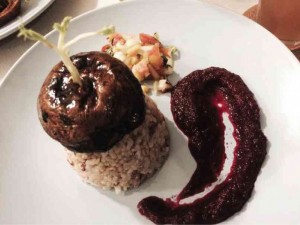MANILA, Philippines–I make it a habit to ride my bike at least a few kilometers around Metro Manila as my personal way to start the new year on a healthy note. Considering that my family has a history of cardiovascular disease, cycling and occasional brisk walking have been my way to put my heart in good condition.
Like brisk walking, I find cycling as a satisfying and inexpensive way to give my heart, blood vessels and lungs a good workout, and hopefully reduce my risk of health problems such as stroke and heart attack.
“Moreover, it’s a low-impact exercise that can be enjoyed by people of all ages,” said Dr. Adolfo Bellosillo, founder and president of the Foundation for Lay Education on Heart Diseases, who also cited exercises like swimming, stationary biking and rowing as other excellent alternatives.
Studies from Purdue University in the United States have shown that regular cycling can cut one’s risk of heart disease by 50 percent. And according to the British Heart Foundation, around 10,000 fatal heart attacks could have been avoided each year if people kept themselves fit and within their ideal weight. The same organization has found that cycling just 32 kilometers (the distance from Makati City to Alabang in Muntinlupa City and back) a week reduces one’s risk of heart disease compared to those who don’t exercise.
Leading cause of death
Bellosillo related that cardiovascular diseases, which include stroke, high blood pressure and heart attack, remain the leading cause of death in the country. Each day, around 300 Filipinos die due to heart disease and about six Filipinos die due to stroke.
“This is no surprise considering 14 million Filipino adults aged 20 and above have been diagnosed as hypertensive, while three out of 10 Filipino adults 20 years old and above are either overweight or obese. Hypertension is a risk factor for coronary heart disease and the single most important risk factor for stroke, while being obese puts one at a higher risk for health problems such as heart disease, stroke and high blood pressure,” Bellosillo said.
Bellosillo, who also heads the Makati Medical Center’s Cardiac Rehabilitation and Preventive Cardiology Unit, said that most heart attacks start slowly. “Often, people affected aren’t sure what’s wrong and wait too long before getting help.” He shared the following tell-tale signs that one is experiencing a heart attack:
1) Chest discomfort. Most heart attacks involve discomfort in the center of the chest that lasts more than a few minutes, then comes back (an on-and-off pain that one experiences). The person can feel uncomfortable pressure, squeezing, fullness or pain in the chest.
2) Discomfort in other areas of the upper body. Symptoms can include pain or discomfort in one or both arms, the back, neck, jaw or stomach.
3) Shortness of breath with or without chest discomfort.
4) Cold sweat, nausea or light headedness.
To prevent all these warning signs, Bellosillo said that taking a heart test would be an excellent decision, considering that there are already advanced and relatively affordable imaging and blood tests that give a much more accurate assessment of a person’s heart attack risk. “These tests are the best ways to tell if you are in danger of having a heart attack because these tests can catch cardiovascular disease years before it gets severe enough to cause a heart attack or stroke,” he stressed.


